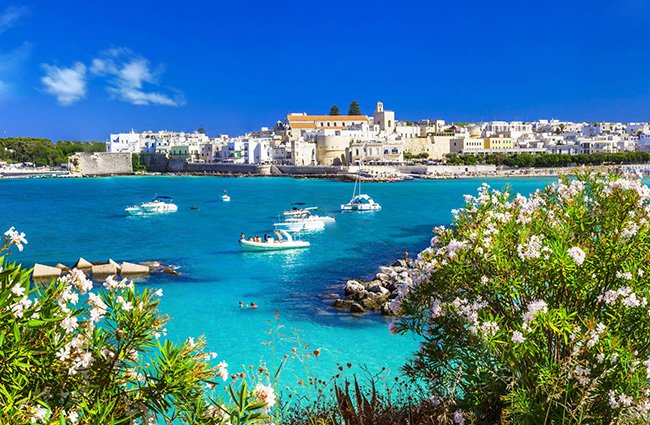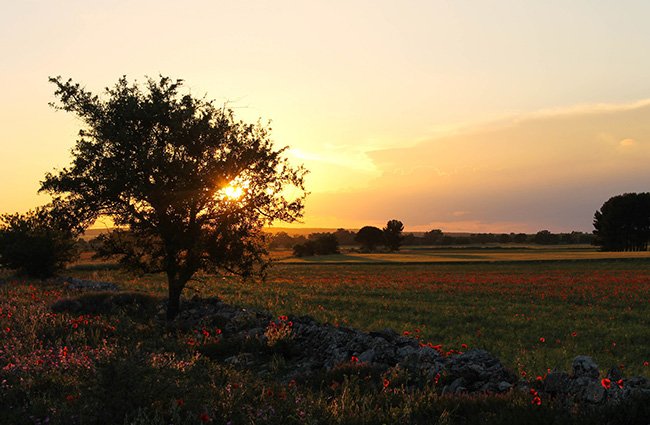Surroundings
San Giovanni Rotondo is famous for its Sanctuary, where is preserved the corpse of San Pio from Pietrelcina, Capuchin monk who lived for more than 50 years in this city. Plunged into the National Park of the Gargano, placed onto the hills close to the Calvo Mount, the city of San Giovanni Rotondo is nestled in the middle of an amazing natural scenery.
To discover the roots of this city, one has to come back to the 100 AD. It was founded on the ruins of a village dated back to the V century BC, whose finds are still visible, such as some tombs and a round Baptistery, at first dedicated to Janus, then to Saint Johannes.
The natural frame where San Giovanni Rotondo is nestled, offers to who loves nature unique landscapes.

A Sea of Feelings
The Salento, the Gargano, the Tremiti Islands: thanks to its 800 km of coast, the Apulia is one of the most loved Regions where to spend summer holidays. Wet by the Adriatic Sea on the Eastern side and by the Ionian Sea on the Western one, the Apulia has a varied and striking coast, with a lot of beaches both sandy and rocky.
The main feature of the pugliese coast is the alternation between with falesia, close to the clear sea of the Salento, wide sandy bays with low bottoms, above all in the province of Taranto, and amazing small inlets.
Few other Regions in the Mediterranean area offer such a wide range of different landscapes: the Apulia is a land where one is surprised and conquered by the local people, the excellent typical cooking, the historical-artistic heritage and the so many events that are held all year long.
Landscapes
Despite the presence of maritime landscapes and a limited geological uniformity, the Apulia offers to its visitors, even in the hinterland, a lot of different landscapes. The calcareous rock dominates in the Gargano, in the Murge and in the Salento, but there are also karstic events, such as the well known "gravine" in Taranto and the "doline"; rare are instead the rivers.
With its 3000 square km, the Tavoliere is the widest plain in Italy: it is compound of alluvial plots of land, that are mostly clayish, therefore really young, it is slightly wavy, very cultivated and is cut through by the main rivers of the Region, among which the Ofanto (134 km). In the South of the Apulia there is another flat calcareous area, the "Tavoliere salentino".


Art & Religion
Despite yet from the early Twenties has started to come in the Region a number of pilgrims, who reached the Gargano promontory, it was clear to everyone that the Chiesina of Santa Maria delle Grazie were too small to host such a needy people, so much so that Padre Pio was more than one time forced to celebrate the Holy Mass outdoor, works for the Sanctuary started only in 1956.
The church started to be built under the attentive management of the Architect Giuseppe Gentile from Bojano, and was consecrated the 1st of July, 1959.
It has three naves, the central one is dominated by the majestic mosaico of the apsis and it represents the icon of the Madonna delle Grazie in the glory of the angels and Saint Pio, who mediates between the Holy Mary and the suffering mankind.

